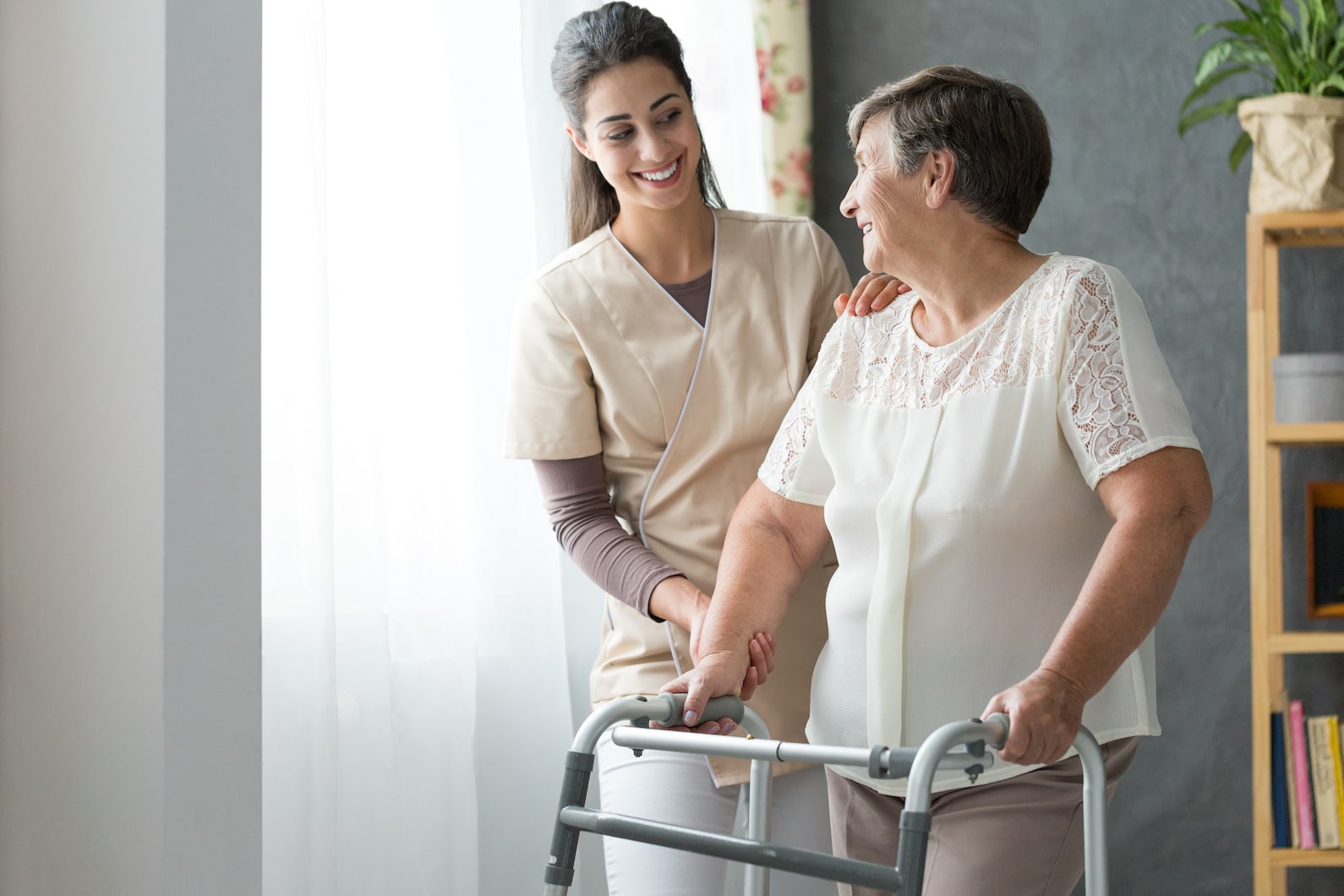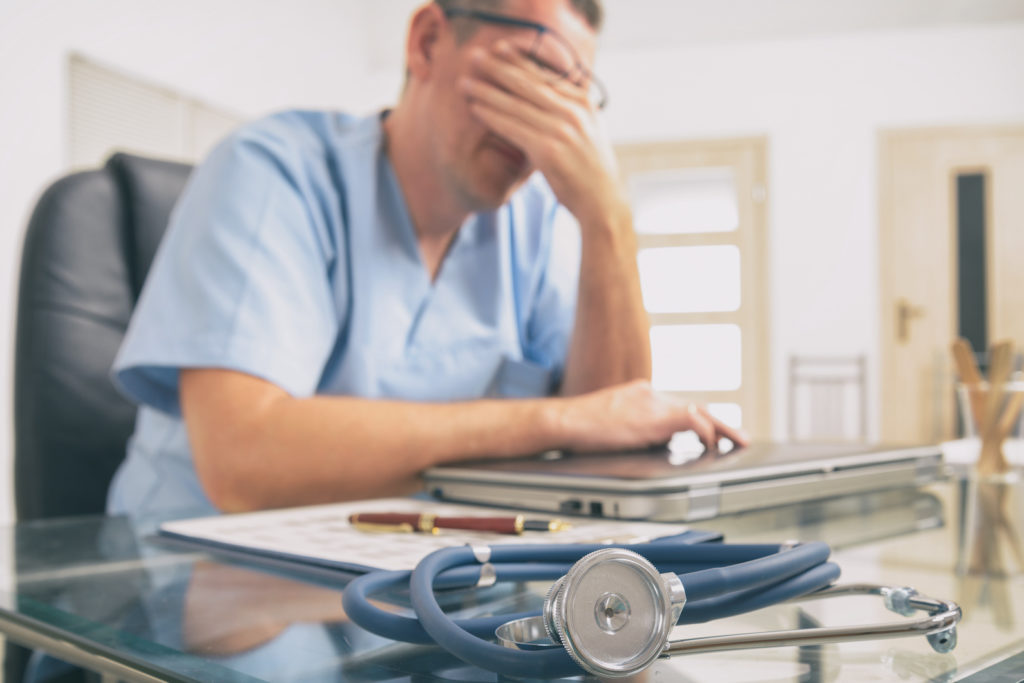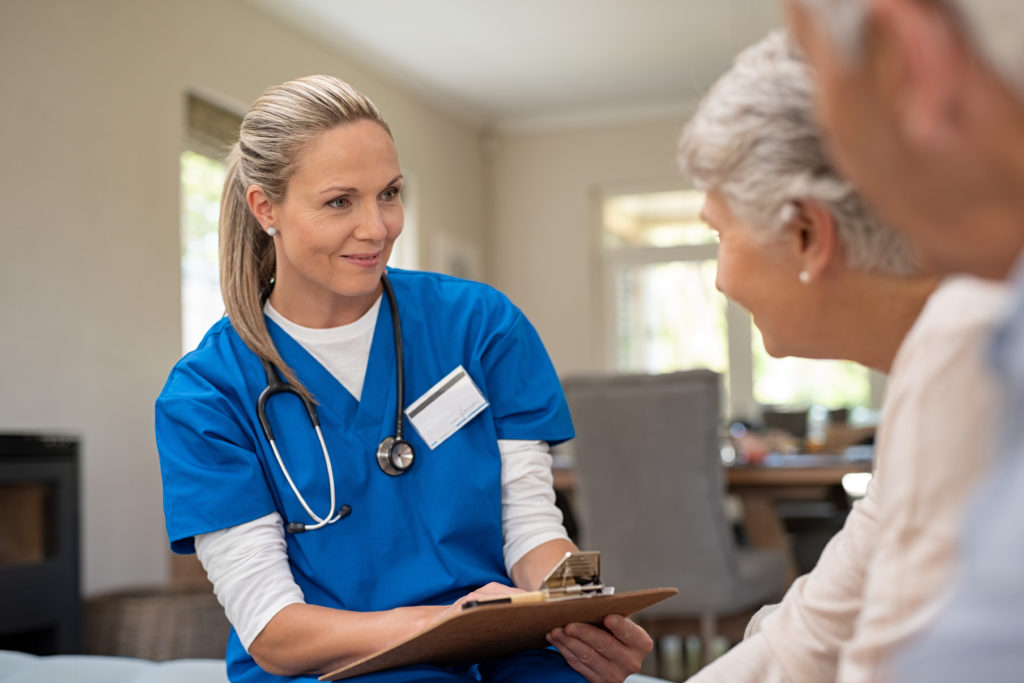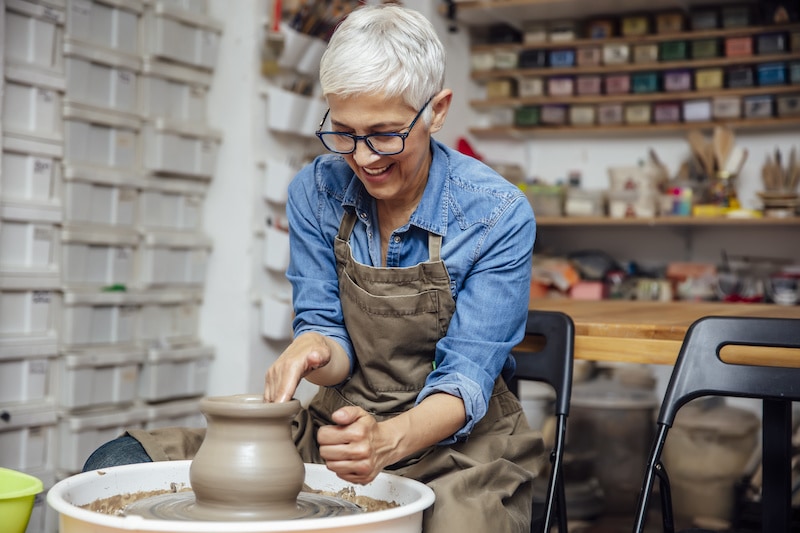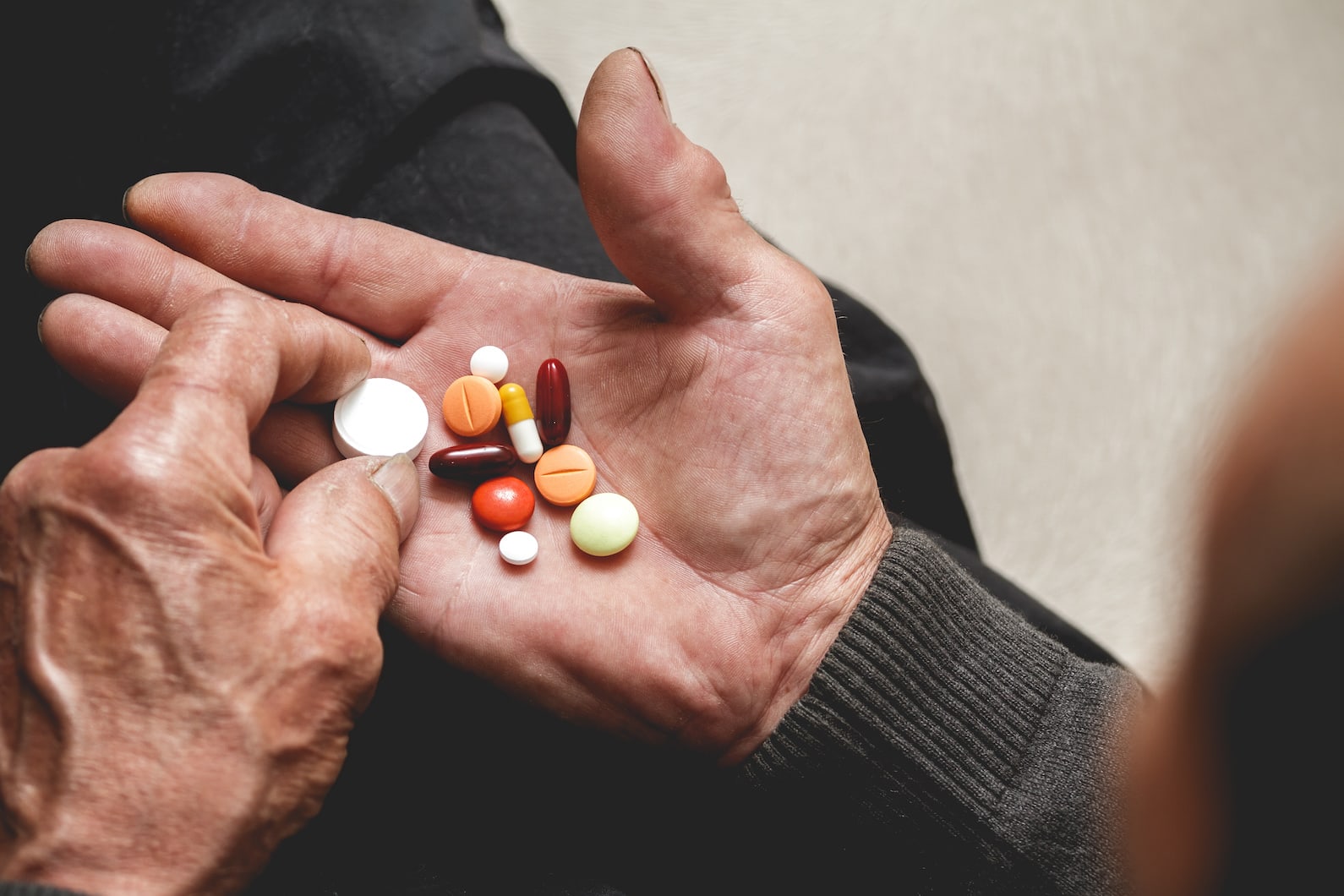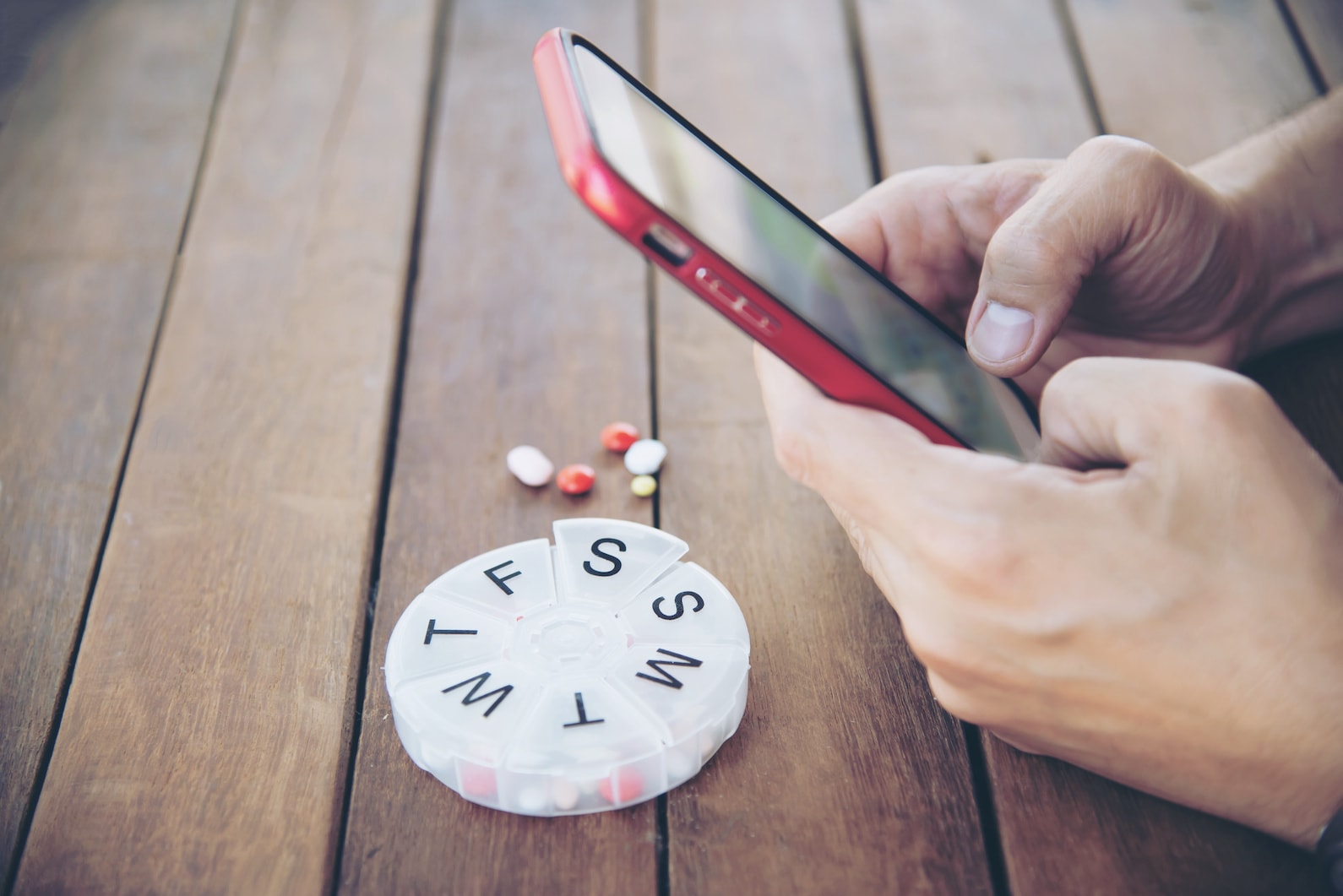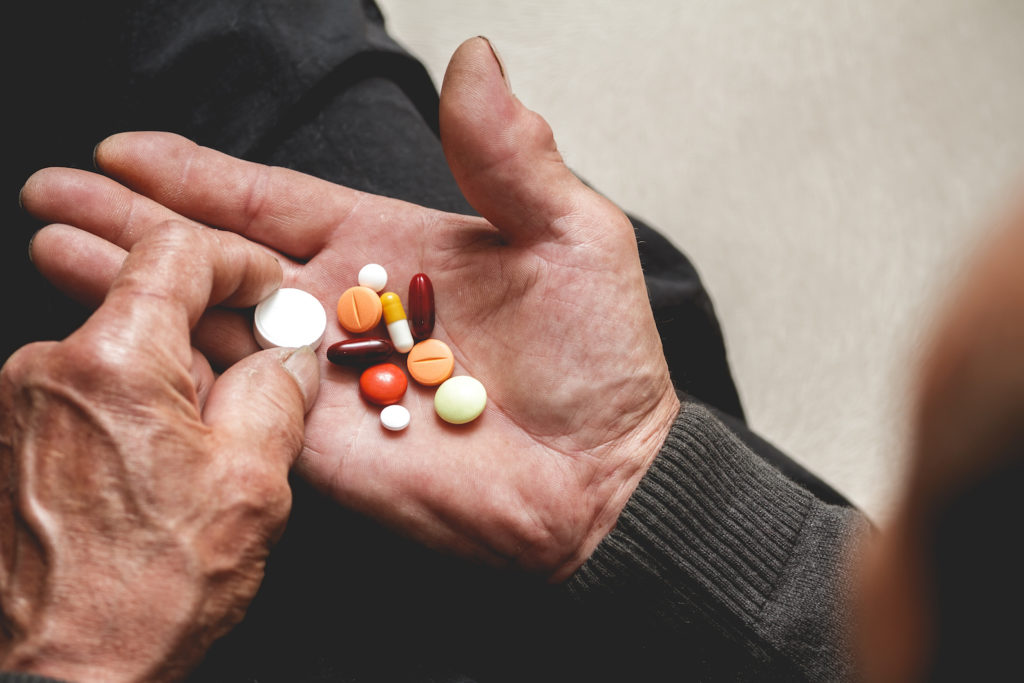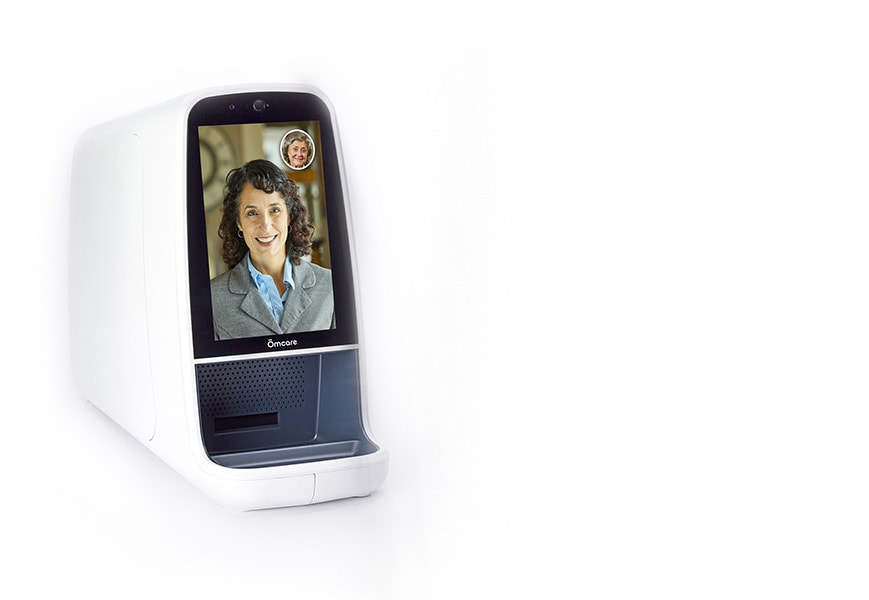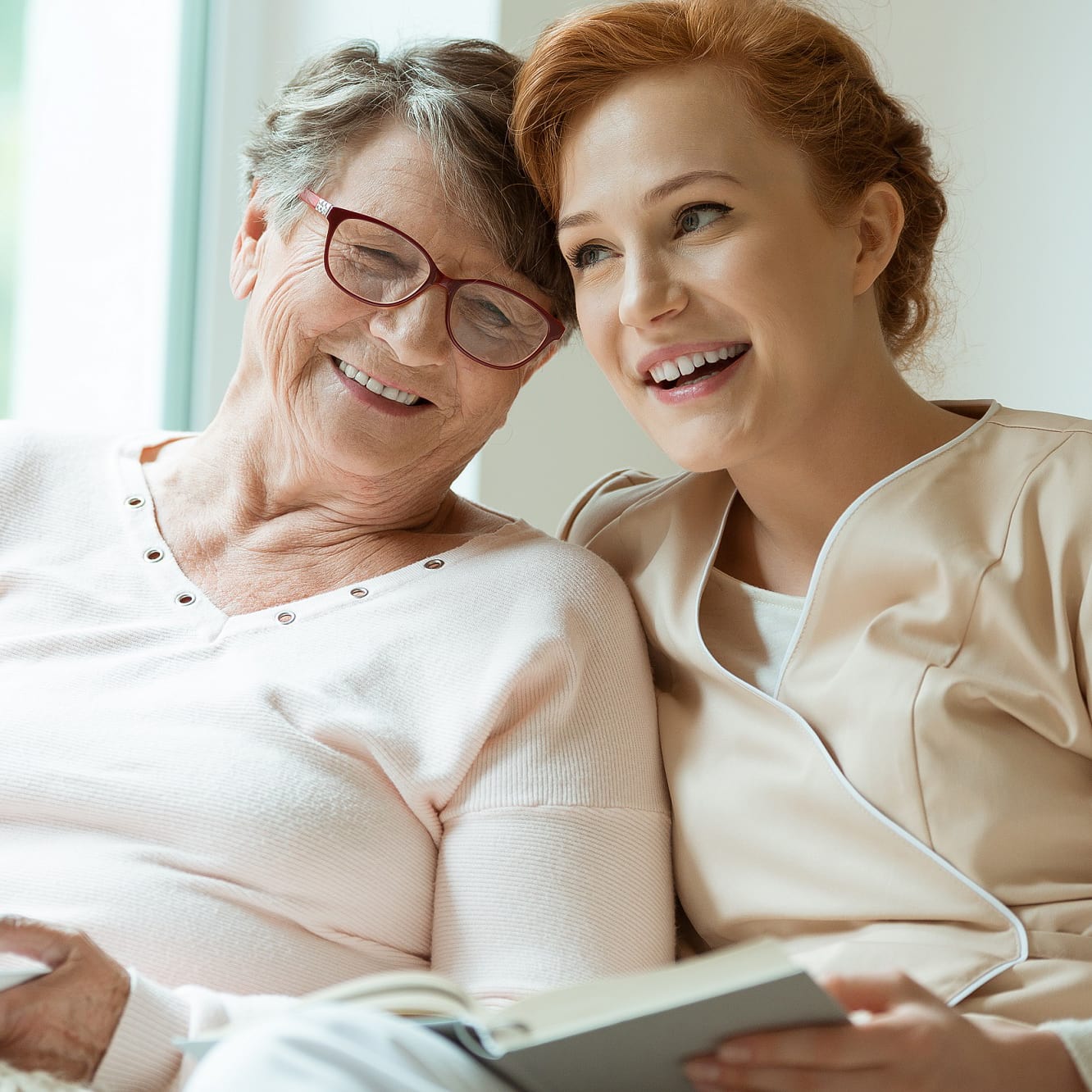Automatic pill dispensers for people with Alzheimer's: simple options for 2021
Remembering to take medication can be difficult for anyone, but especially those in the early stages of Alzheimer's. Alzheimer's is a progressive disease that affects mental function and memory, making it difficult to do daily tasks, including taking medication.
However, there are some simple ways to ensure people with Alzheimer's take their medication on time, every time, without constant supervision.
Automatic pill dispenser for Alzheimer's patients
Automatic pill dispensers are one of the greatest ways to improve medication adherence, prevent double dosing, and ensure you or your loved ones take the right pills, every time. Pill dispensers have come a long way from the 7-day pill organizer box, and now come with all various features that make it as easy and automated as possible.
Of course, someone with Alzheimer's is not always going to be able to manage their own medication, even with an automatic dispenser. But there are a few simple options to choose from depending on their level of cognition and independence. Below are good options if you are looking to purchase an automatic pill dispenser.
Easy-to-use pill dispenser
Some dispensers require a somewhat tech-savvy end-user. However, there are a few pill dispensers that are very user-friendly and allow people in the early stages of Alzheimer's to remain independent by managing their own meds.
MedCenter Monthly Pill Organizer
Although this isn't exactly an automated pill dispenser, this simple alarm clock pillbox is super easy to use and is a more advanced pill organizer. It requires very little technical knowledge and can be easily loaded every month by a helper or home health aide, and then alarms will ring each day to alert the user to take their meds.
Alarmed pill dispenser
For a more advanced option, this alarm pill dispenser is highly user-friendly and signals a loud alarm or flashing light to alert users with both memory and hearing impairment that it's time to take their medications. MedReady Automatic Pill Dispenser
The MedReady automated pill dispenser is a simple design but works just as effectively as some of the high-tech versions. The basic design allows users to load 28 days of pills in the locked case, holding up to 5 large pills or 10 smaller pills. In addition, the device can have up to 4 alarms set per day, and they can run for 30, 45, 60, or 250 minutes to allow users ample time to hear and respond to the alarm. It also comes with a rechargeable battery so that it can be taken on the go.
Also, their upgraded versions include a red light for the hearing impaired, a land-line connection to alert emergency contacts of a missed dose or a wireless plan that alerts the MedReady website of missed doses and other alerts.
High-capacity pill dispenser
The Hero automatic pill dispenser can hold up to 90 days worth of medication and also includes all of the benefits mentioned above, such as ease-of-use and alarm capabilities, but with more technology and support included in the monthly package. It will also notify caregivers or emergency contacts if a dose is not taken and the alarm is never turned off. This is essential to providing proper medication dispensing, which is also tracked in its automated medication adherence tracking.
Smart pill dispenser with locking capabilities + more
Last but definitely not least, the Ōmcare Home Health Hub offers all of the above plus telehealth capabilities. Not only can people with Alzheimer's ensure they take their meds on time thanks to alerts, the automatic pill dispensing, automated medication delivery, and ease-of-use, but they can converse with their healthcare support team right from the device.
They can also connect with family members and other caregivers, which can be used as an additional way to improve medication adherence, particularly with those with memory issues. Speaking to a nurse every time they take their meds or review their meds each month creates a solid feedback loop to keep medication on track and prevent dangerous double dosing.
Overall, Ōmcare has the best automatic pill dispenser for Alzheimer's patients if you're looking for a solid, fail-proof solution. To find out what we can do for you or your patients today, contact us here.
Cost of home care: Average out of pocket costs in 2022
Many people prefer to live at home as they age, for as long as they can. Aging in place is a term defined by the CDC as the ability for one to live in their own home safely and independently, regardless of age or income. Home is truly where the heart is, and for many, it brings a level of comfort that an assisted living community just can’t. However, aging often requires more attention and care when it comes to a person’s health. That's where in-home care comes in.
In-home care is an option for seniors who require assistance in their homes as they age in place. This care is delivered by trained aides who help individuals with ADLs (activities of daily living), IADLS (instrumental activities of daily living), and more day-to-day management of their lives and well-being. As great as the idea sounds to have a home health aide, the costs can be incredibly high. Keep reading to discover the true cost of in-home care and how to determine what the out-of-pocket costs may be.
Types of services provided by home healthcare aides
There are several types of in-home care services. These services—or some of them, depending on your specific needs—will be provided if you decide this is the right choice for yourself or a loved one.
Examples include:
- Personal hygiene and care assistance for bathing, dressing, grooming, and brushing teeth
- Assistant with using the bathroom
- Meal prep and grocery shopping
- Light housekeeping, such as laundry, dishes, dusting, cleaning
- Running errands and helping with around-the-house tasks
- Meal preparation and serving/feeding
- Providing transportation
- Medication management and administration
- Home safety modifications and management
- Monitor vitals and record a client's condition each day
- Offer companionship and socialization
There are other services that home health aides may provide as well. Oftentimes, familial caregivers can also manage many of these tasks. However, it can become quite a burden or inaccessible if they live in different areas. So hiring a home health assistant often becomes the best choice.
The cost of home care today
By 2030, the number of people aged 65 and older will reach 71 million. Many of these older adults will require personal care services, such as assisted living communities and skilled nursing care in the home. And this number won't be slowing down anytime soon; the need for in-home care will only grow from here, both via demand and cost.
That leads us to our next point. Assisted living facilities and home health care services are both expensive, and deciding between in-home care vs. care in a facility can prove challenging. We hope that this cost breakdown will help you determine which is best for your needs.
A few fast facts about the cost of in-home care:
- The majority of home care agencies charge by the hour vs. monthly contracts.
- Location, level of care, and licensing requirements can all drastically affect the cost of in-home care.
- The demand for in-home care is surging, and the cost rose nearly 3.80% from 2004 to 2020.
- Currently, for full-time (40 hr/week) in-home care for seniors, the median monthly cost is almost $4,500.
According to the Genworth Cost of Care Survey 2004-2020, the current annual cost for a private room in a nursing home is $105,000+. Assisted living facilities, home health aides, and home care homemakers are nearly half the cost sitting around $50,000 to $55,000 annually. That's a drastic jump, thus why in-home care becomes a very viable option for many who would choose to age in place over uprooting to a nursing home.
How much will in-home care cost in the future?
In-home healthcare costs can change drastically depending on several factors—location is one of the greatest. For example, Washington state is one of the most expensive states at $31.16/hr, but Louisiana is one of the lowest at $17/hr. The Cost of Care Survey takes a deeper dive into the hourly, monthly, weekly, and monthly rates of in-home care for the next 50 years.
The current median hourly rate for a Home Health Aide in the U.S. stands at around $24/hr. This number will grow dramatically over the next few decades (at 3% inflation) as such:
2030 — $32.25/hr
2040 — $43.35/hr
2050 — $58.25/hr
2060 — $78.29/hr
2070 — $105.21/hr
As you can see, in 50 years, when many young college grads will be reaching the age of needing long-term care, they can expect to pay nearly $100 an hour for an in-home care aide. However, we know advancements in technology and healthcare continue to make it easier and more realistic to live longer and healthier lives.
For continued support, while aging in place, reach out to Ōmcare. Our Home Health Hubs make it easier than ever to manage medications at home and prolong or replace the need for an in-home aide. Our easy-to-use system can make medication administration fast, easy, and safe while allowing for remote telehealth visits and connecting with loved ones. Reach out today for more information.
6 of the best medication delivery companies compared (2021 update)
Today we can get just about anything delivered. Do you want Mcdonald's delivered at 2 am? No problem, order DoorDash. Do you need to furnish your new home but don't have a truck to haul furniture? No worries, Slumberland will deliver everything to your door (and carry it inside)! But what about medication?
Pharmacies have long offered prescription delivery services but with less-than-convenient times and offerings. Thankfully, that has changed significantly in the last decade to the point where there are dozens of prescription delivery service companies to choose from. Choosing one can be overwhelming, so we thought we'd help by narrowing down a list of the best medication delivery companies in 2021.
PillPack
PillPack is one of the most popular names in prescription delivery, and even more so after being purchased by Amazon Pharmacy in 2019. PillPack has changed the game when it comes to medication management. They offer free home delivery, and users only pay for their med copays, PillPack takes care of the rest.
After signing up, users send in their medication details, then PillPack works with their doctors or pharmacies to sort out all prescription and non-prescription items (like vitamins and supplements). Then, everything is delivered in conveniently packed daily pouches. It's easy, affordable, and convenient.
Capsule
Capsule currently only delivers to 13 major cities around the country, including the Twin Cities (and their surrounding zip codes). Still, they are well on their way to becoming one of the most used prescription delivery services around. Capsule offers same day delivery of your prescriptions, even if you're a new customer.
They have pharmacists who care and want to make it as easy as possible for anyone to get their medications delivered to their door with no hassle. Capsule can become your new pharmacy with the help of your doctor and accepts any insurance.
ExactCare
ExactCare is one prescription delivery service that goes beyond just convenient home deliveries. They also partner with nursing homes, home health workers, and manufacturers to create a more well-rounded medication management system and help improve patient health outcomes.
In addition to packaging and delivering medications to your home, ExactCare also provides comprehensive support services to ensure your medication is managed and adjusted to be as effective as possible, especially when treating chronic diseases.
ZipDrug
Recently merged with IngenioRx, ZipDrug is making huge advancements in medication adherence and prescription care for patients with chronic conditions. However, they are opposed to common industry issues like Medicare Advantage patients being prescribed the most expensive option, more recurring medications, and paying way too much in general. So, ZipDrug steps in and connects people with the best, most affordable pharmacies in their area who work best for their health plans and their care.
They even reward pharmacies who take steps toward improving medication adherence in patients who get drugs delivered by ZipDrug. It's a win-win for everyone and provides beneficial pharmacy services on the go.
DivvyDOSE
DivvyDOSE is very similar to PillPack since they package all of a patient’s medications into one neat daily pouch that you can just open, take your meds, and go on living your life without worry. The convenience factor is huge, not to mention free delivery, free packaging, and they accept all major health insurance plans.
With DivvyDOSE, you'll never run out of refills because they remind you and take care of contacting your doctor. They will also include a small medication card that fits into a wallet, so no matter where you are, you always have your most up-to-date script info.
Simple Meds
A small team with a big purpose, Simple Meds is adding to the top contenders changing how prescription drugs are managed for good. No one should have to worry about how or when their prescriptions are getting filled. With Simple Meds, members get simple, easy medication management with no hidden fees.
 Finding the Best for You
Finding the Best for You
Many similar companies are paving the way for better and more advanced medication adherence efforts. Most companies will work with your insurance company, get your prescriptions filled, and deliver them right to your door, hassle-free. But these companies mentioned above have proven to be some of the best in the industry, and we're excited to follow where they go.
Of course, we'd be remiss not to mention Ōmcare's efforts to improve medication management as well. For example, our convenient prescription delivery service ensures our Home Health Hub stays fully loaded with proper daily dosage in easy-to-open pouches, shipped out every single month. For more information on how Ōmcare can help you or your loved ones get their prescription dispensed on time with convenient delivery, reach out today.
Healthcare worker shortage forces creativity to deliver care more efficiently
There is currently a massive shortage of healthcare workers across the nation, at all levels of care. However, the extremes are hitting facilities, like nursing homes and assisted living facilities, which rely on lower or non-credentialed health care workers to assist nurses and doctors day-to-day.
Some lower credentialed positions struggling to stay staffed include medical assistants, home health aides, and pharmacy technicians. The National Community Pharmacists Association (NCPA) conducted a survey in June 2021 that showed some astounding statistics about the state of the nation’s pharmacies.
Currently, four in five pharmacies are struggling to staff enough workers to handle patients, deliver prescriptions, and simply manage the cash registers. There are many reasons for this including people leaving positions (during the pandemic) where they are exposed to more people or finding work elsewhere for more pay, but also the growing aging population is heavily affecting the need for healthcare workers.
What is driving the healthcare worker shortage?
The baby boomer population makes up nearly a quarter of the entire population of the United States. This population is now reaching the age where they have higher healthcare needs, and it’s not slowing down any time soon.
The United Nations put together a document on world population aging, and there are some pretty astounding statistics regarding growth and trends.
- By 2050, people 60 and older will make up 25% of America's population.
- The global population of people 80 and older is projected to triple between 2017 and 2050.
- The U.S. birthrate dropped by 4% in 2020, and it's expected by 2030, older persons will vastly outnumber children ages ten and under.
As these older generations continue to grow, the need for healthcare does as well. And with many people leaving the healthcare industry and not being replaced with incoming workers, the shortage continues.
How can the industry combat these shortages?
One of the biggest issues with these lower-credentialed jobs is low wages (not to mention the competition from other industries right now). Based on labor statistics data in the state of Minnesota, a personal care attendant (PCA) is one of the most in-demand jobs, but the median annual wage is $28,562 per year.
The government is doing what it can to help with the healthcare worker shortage, but that does not seem to be enough. A recent proposal from Minnesota Governor Tim Walz is urging the healthcare industry to increase wages for home care workers. Unfortunately, the care service clients with PCAs receive are funded by Minnesota’s Medicaid program. This means the rate the state will pay for services is completely dictated (and capped) by the state Legislature—these low rates barely cover the cost of care. So how will they ever be able to pay home health aides more?
Another way the industry is combating this huge shortage is by hiring people with more experience working in the healthcare field, but for lower-level positions. A new market has popped up for those who have been retired from their career of being a nurse, doctor, or medical assistant and want to get back into the workforce as an on-call position that will work within certain hours they can accommodate.
That trend may become one of the more popular ways to fill the gap in lower-level healthcare workers, but it's not an ideal situation due to higher costs and unnecessary credentials. There are other ways to fill these gaps in the health care workforce and help alleviate the worker shortage.
One way is to introduce technology and other automation to ensure at-home care is never sacrificed due to staffing shortages, for example, technology services like Doctor On Demand. Doctor on Demand allows patients to quickly and easily get standard checkups and prescription refill appointments over video chat, from the comfort of their homes.
How Ōmcare helps
Ōmcare is a hardware and software solution that helps alleviate the need for in-home nurses, especially for older individuals who need consistent medication management. After installing a Ōmcare Home Health Hub in a patient’s home, an uncredentialed worker can make calls, cheaply and efficiently, multiple times a day to walk a patient through medication management.
The Ōmcare Home Health Hub allows for health workers to scale their time, instead of running from home to home, while still providing high-touch and seamless care. If you’re interested in integrating a Home Health Hub into your patients' homes and alleviating the burden on your care staff and HR hiring team, contact us today for more information.
Senior health: 11 tips for aging well
There are many ways that you can strive towards staying healthy and active as you age. A combination of diet, exercise, and mental wellness can help us age gracefully and maintain our independence for longer. These health tips can help you or your aging loved ones to feel better, longer.
Tips for aging well in 2021.
As you get older, your minds and bodies change, and it becomes more critical than ever to take care of yourself. Here are some tips for successful senior health management and ensuring a long, happy, healthy life.
Maintain a healthy diet
While it may be harder to maintain a good diet for older adults, senior health experts agree that a good diet is one of the most important factors in health outcomes. Everyone needs food A high in vitamins and protein for strong bones and muscles, which means eating plenty of lean protein sources (chicken, turkey, and fish especially), fresh produce, whole grains like brown rice or quinoa, beans, or other legumes. Studies show a healthier diet for older adults can improve cognitive function and disease control.
Taking supplements
As you age, there are critical nutrients the body becomes depleted of. Be especially cognizant of your levels of each nutrient below and talk to your doctor about supplementing if necessary.
- Vitamin D is essential for boosting the immune system.
- Vitamin C is an antioxidant that helps improve the overall function of our bodies by boosting vitamin absorption, wound healing, and aids in vision and organ function.
- Calcium is essential for bone and teeth health.
- Vitamin A is good for heart, lung, and liver health.
- B Vitamins must be replaced as you age because our bodies become less efficient at absorbing B vitamins from the foods we eat. B12 deficiency can negatively affect brain function and only increases our chances of memory loss, high blood pressure, and nerve pain.
Get regular exercise
Specific exercises and specialized training may be better than others, depending on your health or any chronic pain. For example:
For those who experience joint pain, walking or swimming at low-impact levels can still help strengthen muscles without putting too much pressure on the joints. Even just daily walks around the block can make a big difference in senior wellness. Aerobic activities like dancing or yoga have been shown to improve mood, which also helps fight chronic illness symptoms like depression and anxiety. If mobility is an issue, tai chi classes where movements are done slowly with concentration can be easier on the body while being both meditative and strengthening.
Focus on mental wellness
Mental health in the elderly can be a big issue that often gets left behind. Mental health is severely affected by the loss of loved ones, feelings of isolation, and the physical and mental changes that come with aging. Talking about it in therapy, or with loved ones, or even acknowledging feelings of anxiety and depression can be the right step towards mental wellness.
Hobbies for keeping busy
Staying busy can help alleviate feelings of loneliness and boredom, especially for older patients living in a senior healthcare facility. Some hobbies good for seniors include arts and crafts, painting, playing card games, or even gardening on the property. Doing things they once enjoyed may not always be an option for them, so finding fun hobbies to pass the time can be a crucial component to maintaining overall wellness in seniors.
Caring for skin and teeth
Dermatologists always say the best skincare in your 50s is proper skincare in your 20s. Unfortunately, we can't turn back the clock on our skin but can always do things to maintain it and keep it healthy. The number one thing seniors should do to protect their skin is to wear sunscreen every day. Skin cancer is prevalent in older adults, especially those who did not wear sunscreen consistently throughout their lives.
And as you age, you lose a lot of collagen, making the skin thinner and more susceptible to wounds and sun exposure. Teeth can also decline in health, and many seniors end up opting for dentures for ease. However, eating healthy, brushing regularly, and taking the proper vitamins can slow down the deterioration of skin, nails, and teeth.
Getting better sleep
Older adults often experience sleeping problems. This could be because of medications affecting sleep quality or health conditions like arthritis pain or acid reflux that can keep them up at night. If you're having trouble falling asleep at night, talk to your doctor about calming methods and supplements that may work for you.
Hydration!
Drinking enough water is essential for human life. Drinking water helps hydrate your skin, organs and improve bladder and digestive health. The elderly are very prone to dehydration, so ensuring they get at least 64 ounces of water every day (the eight glasses of 8 oz. water rule) can help prevent ailments and boost overall health.
Staying social
The psychosocial changes of growing old can be detrimental to someone's health. Many older adults may find it hard to maintain friendships or go to the social events they once did before they dealt with chronic illness or pain. However, socializing is a normal part of life, and without it, one can feel more lonely and depressed, which can actually lead to more medical problems. Therefore, caregivers and elderly care facilities need to make sure they keep a full calendar of social events that everyone can enjoy together each week—from bingo to dances to playing cards.
Routine medical care and tests
Regular health maintenance and prevention are vital to better health outcomes. There are some routine tests and treatments that can significantly improve the health of older individuals by ensuring their care plan is appropriate and catching any issues early before they become worse.
- Get vaccinated for influenza, pneumonia, and shingles (if applicable)
- Regular cancer screenings (breast, colon, prostate)
- Bone density scans for osteoporosis
- Blood pressure readings
- Check blood sugar levels to check for diabetes
- Lipid screening
- Check for high cholesterol and other blood tests
- Annual physicals
Additional safety measures
Elderly patients may face balance problems that require advance care planning to ensure they don't fall and injure themselves. Using a walker, wheelchair, and installing handrails in rooms or hallways can ensure they always stay safe while moving about.
By following these tips, you can go on to live a long, healthy life and address health concerns before they become chronic health conditions. Here at Omcare, we believe a healthy lifestyle is possible no matter what age, and you can enjoy living longer by focusing on better health outcomes and wellness early on.
6 (Effective) ways to remember to take your meds
How often do you struggle with remembering to take your medication? It's a common problem that can often feel difficult to overcome since it's all about solidifying that habit. Fortunately, some tools and devices are available to help you remember to take your meds on time. We're listing some of the most popular methods for how to remember to take your medications on time each day.
What happens when you miss a pill dose?
There are many reasons why people frequently miss doses: forgetfulness, changing schedules due to work or vacation plans, misplaced pills & pill boxes—the list goes on! The time of day you take your medication matters significantly, especially with those with chronic conditions with strong medications that could cause withdrawal symptoms or jeopardize their regimen.
Depending on all your medications, symptoms for missing doses can vary greatly. Going through your medication regimen as prescribed is highly important. If you're ever unsure what to do if you miss a dose, make sure you reach out to your healthcare provider.
6 Ways To Remember To Take Your Meds
You can use a few different methods to put reminders in place for when it's time to take your daily meds. Here is the list of some of the most popular methods:
Setting a daily reminder or alarm
Set an alarm on your phone or create calendar slots with reminder notifications. If it's too easy to hit snooze on your smartphone or you don't always have your calendar handy, you may need another method. For example, try setting an alarm and placing it next to your pill box so you'll remember to take your pill when you walk over to shut it off.
Use a manual pill dispenser
Choose the same day each week (many choose Sunday) and put all of your pills in their respective day slots in a pill organizer. That way, you can quickly and easily see whether or not you've taken that day's pills. It's a less automated way of doing things but can still help those who take multiple meds per day.
Pair the action with activities every day
Taking your medication on time becomes more attainable when it’s a habit. And most of us already have daily habits like brushing your teeth in the morning or washing your face before bed. By pairing your dose with a daily routine, remembering becomes easier each day.
Notification devices
Use a reminder device like a vibrating pill box or a smart wristwatch that vibrates to remind you to do things. These notification devices often come as complete kits with everything you need, so there's no need to worry about forgetting anything else.
Utilize health apps
Set reminders within health apps such as Medisafe Pill Reminder, Mango Health, MyTherapy, or MedMinder. These apps allow you to lookup drug information, set medication reminders and have the added benefit of tracking your own personal medication records.
Automatic pill dispensers
Automatic pill dispensers are devices with built-in schedules so you can be reminded and dispense your medication the minute it’s due. These devices have helped bridge the gap between patients, family members, and doctors who must ensure the prescription is taken as directed. For older adults remembering to take the meds can be quite difficult: these automatic pill dispensers make it easy.
How Omcare Can Help!
Ōmcare has invented the Ōmcare Home Health Hub, which includes a high-tech pill dispenser with additional easy-to-use features and the R ball. Using advanced technology, we've crafted a device that offers video support on top of automatic dispensing: no more blister packs, cumbersome refills, reminders, or last-minute calls to the pharmacist. Ōmcare's Home Health Hub takes care of everything and ensures you or your loved ones never forget to take their medication. Our Ōmcare customer care team is available 24/7 to answer any questions and provide the expert support you and your loved ones need.
Staying connected and caring during a health crisis
Information surfaces hourly about the newly classified pandemic COVID-19, and the headlines can be alarming.
The Centers for Disease Control and Prevention advises that people over 80 years of age with major illnesses have the greatest risk and should take extra precautions, such as staying in their place of residence and limiting the amount of exposure to other people, including family members and caregivers. Meanwhile, the Centers for Medicare and Medicaid Services has issued guidelines for restricting access to residents in skilled nursing facilities.
If you’re caring for an aging loved one who is either living independently or in nursing home, these guidelines can raise concerns about feelings of loneliness and isolation, as well as adherence with medication or other care plans for your loved one. Technology can play a significant role in keeping family members, patients, and care providers connected while decreasing the risk of exposure to COVID-19 or influenza – which is still a primary cause of illness, complications, and death for seniors.
3 ways technology can enable care, from anywhere during a health crisis
- Stay socially connected. Healthy adults can do their part to mitigate loneliness for the older population by introducing them to technology such as FaceTime or Skype. Take a few minutes to install the app on an iPad, tablet or smartphone, provide a bit of training, and encourage family members to connect with seniors online, in theevent that in-person visits are prohibited.
- Manage medications. A consistent care routine is the foundation of a successful, long-term care plan and is especially important when visits from a caregiver are limited. Use two-way video capabilities to remind loved ones of when to take their medications and to oversee that process. If needed, you can even dial in a clinical care provider for a three-way call.
- Conduct virtual visits. Nearly half of family caregivers travel to care for someone. If you’re worried about exposing your loved ones to COVID-19 or influenza, lean on systems like Google Nest and Amazon’s Alexa to ensure that all systems are “go” for seniors who live alone at home.
While the current situation is frightening and confusing for everyone, now is the time to use technology to unite health care providers and caregivers, and to foster communication and support that is essential to keeping everyone healthy. Our team at Ōmcare is committed to applying our expertise in video communications and remote care technology to change the way the world cares. We welcome the opportunity to share information with you about the Ōmcare Home Health HubTM and how it will enable caregivers of all types to provide support, care, and medication assistance from anywhere for older adults and people with chronic conditions.
In good health,
Lisa Lavin
Founder & CEO, Ōmcare
3 Strategies to help aging loved ones master their meds
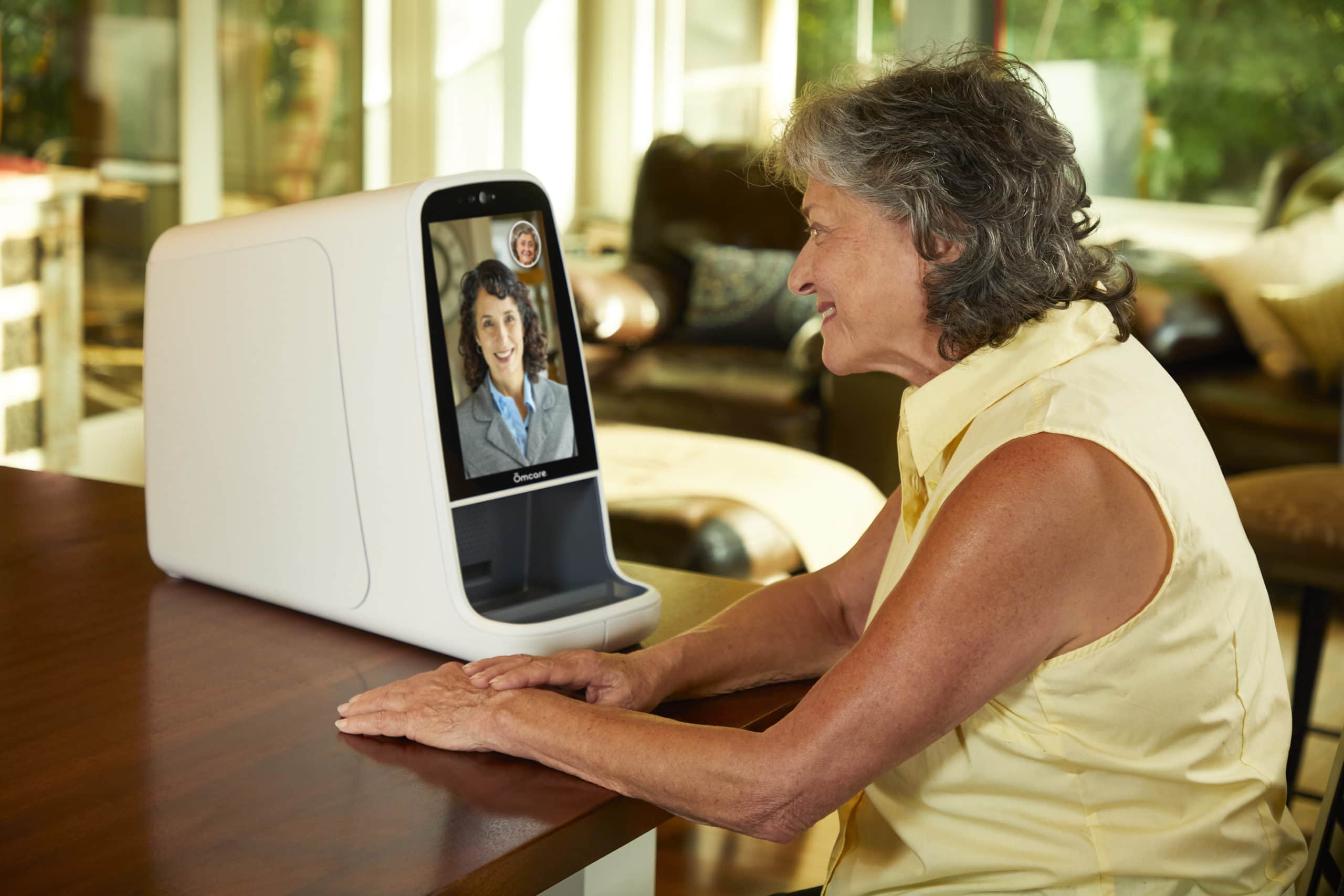
Medication non-adherence directly impacts the senior population, wherein millions of seniors depend on a home care aide or family caregiver to administer medication. Managing the dosages and schedules of multiple drugs can be a complicated, confusing, and even stressful task for caregivers. As a result, part-time family caregivers often experience anxiety related to not knowing if their loved one has taken the right medication at the right time.
If you or someone you know is a caregiver, or if you’re concerned about medication management for a loved one or family friend, here are three strategies to help ensure they take the right medication at the right time.
1. Establish a routine and method of reminders.
A consistent care routine is the foundation of a successful, long-term care plan. Following a simple, memorable routine and reminder system can help aging loved ones remember to take their medications throughout the day, even if their caregiver can’t always be there to remind them.
Continue reading on The Caregiver's Voice.
Ōmcare® unveils its Home Health Hub at HIMSS20 Global Health Conference

(FOR IMMEDIATE RELEASE)
Ōmcare® unveils its Home Health Hub at HIMSS20 Global Health Conference
Ōmcare Home Health Hub™ designed to enable remote care and medication assistance via two-way audiovisual technology
Burnsville, MN (February 17, 2020) – Ōmcare® announced today that it will preview its soon-to-be-released Ōmcare Home Health Hub™ at the HIMSS20 Global Health Conference March 9-13 in Orlando, FL. HIMSS20 attendees can visit booth 6493 to see how the Ōmcare Home Health Hub can improve medication adherence for aging adults and people with chronic, complex health conditions.
Ōmcare is a Minnesota-based digital health company that aims to extend the reach of caregivers and improve medication adherence and outcomes through its Ōmcare Home Health Hub, which gives caregivers of all types – from physicians and pharmacists to home care providers or family members – the ability to see and speak to elderly or disabled dependents and confirm compliance with medication treatment plans from anywhere. The easy-to-use Ōmcare system is designed to serve as a conduit for telehealth and virtual care services. Ōmcare facilitates remote monitoring and interaction via the audiovisual interface and provides confirmation of a patient’s actions and status, which supports and gives family members greater peace of mind.
The two-way video capabilities of the Ōmcare Home Health Hub allow individual caregivers or senior living facilities to ensure proper medication adherence through visual confirmation of right medication, right person, right time – from anywhere – which can significantly impact quality of life and clinical outcomes while reducing health care costs.
“We’ve seen a growing interest in technology that extends the reach of caregivers and enables remote care, from anywhere,” said Lisa Lavin, founder and CEO of Ōmcare. “Our research shows that the marketplace is ready for the Ōmcare Home Health Hub and that utilization of this technology has the potential to change the way the world cares by reducing the burden and cost of caregiving and improving outcomes and quality of life for patients.”
Ōmcare earned its third patent from the United States Patent and Trademark Office (U.S. Patent No. 10,347,377) for the company’s web-enabled, audiovisual, medication-dispensing telemedicine system for the home in 2019. The device made its official debut at the Leading Age Annual Conference and Expo late last year, where it earned nods from industry media as an “emerging technology in the caregiving space.” Ōmcare was also recently named among the “20 Hottest Flyover Tech Companies” by The New York Observer, based on insights from a panel of healthcare and business experts at the 38th Annual JP Morgan Healthcare Conference.
To learn more, visit https://www.omcare.com. To schedule a meeting with the Ōmcare team during HIMSS20, email info@omcare.com.
###
For more information:
Barbara Tabor, APR / (651) 230-9192 / barbara@taborpr.com
About Ōmcare
Ōmcare is a digital health technology company focused on extending the reach of caregivers, increasing medication adherence, and improving treatment outcomes by harnessing the power of remote care and two-way video technology. By partnering with pharmacies, payers, providers, and family caregivers, Ōmcare strives to help people live healthier, more vibrant, independent lives. Learn more at www.omcare.com. Follow on Twitter (@Omcare_Health) and LinkedIn.
Empowering family caregivers and improving medication adherence with connected technology
Exclusive technology from Ōmcare aims to offer an unbroken chain of communication between patients, providers, and family caregivers.
By Lisa Lavin, founder and CEO, Ōmcare
The sandwich generation
The United States population is aging and, in the process, they will require more in the way of long-term care support and services. The senior community will more than triple before 2050, with half of these individuals expected to need long-term care, which will come from either skilled nursing facilities or adult children or family members.[1]
Adults who are part of the sandwich generation—that is, those who have a living parent age 65 or older are pulled in many directions. Thirty-five million Americans provided unpaid care to an adult age 50 or older in 2015. The vast majority (85 percent) were caregivers for a relative, primarily an aging parent.[2]
Caregiving for family members takes many forms. Nearly half of family caregivers travel to care for someone, while an additional 35 percent are sharing a home with the loved one they’re caring for. Some are caring for a spouse or partner, many for a parent — all working to help that person stay at home for as long and as comfortable as possible.[3]
Technology’s integration with health care
Amidst rising costs and changing demographic needs, telemedicine has emerged as a viable solution for doctors, patients, employers, and insurance providers to cut costs and save money.
It’s no surprise then that the utilization of telemedicine is growing. According to Deloitte, physicians conducted about 100 million telemedicine appointments globally in 2014, which generated potential savings of more than $5 billion when compared to the cost of in-person doctor visits. And from 2014 to 2018, the use of non-hospital-based provider-to-patient telehealth grew 1,393%.
Another recent report from FAIR Health showed that the use of telehealth services is growing faster than usage at retail clinics, urgent care centers, and emergency departments. The most recent FAIR Health findings show that overall telehealth claims are expected to increase 624% from 2014 to 2018.[4]
By increasing access to physicians and specialists, telehealth helps ensure patients receive the right care, at the right place, at the right time. Currently, 76 percent of U.S. hospitals connect with patients and consulting practitioners at a distance through the use of video and other technology.[5]
New telehealth and remote monitoring technologies are fundamentally changing the way people interact with the health care delivery system.
Connect caregivers with the right technology
From tracking vital signs with remote monitoring devices to communicating quickly with a nurse through a web portal to receiving on-the-spot care from a doctor via video chat, telehealth aims to make life easier.[6]
An AARP study on technology’s impact on caregiving revealed that 68% of caregivers would routinely use technology to manage critical information about patient health, vitals, and document medications. [7]
The right technology can give health care providers and caregivers a means of communication that is essential to improving patient outcomes. For example, patient monitoring programs that allow virtual check-ins enable patients to extend the duration between doctor's visits or unplanned hospital stays. Meanwhile, a KLAS Research report surveying 25 healthcare organizations found that 38% of healthcare organizations using remote patient monitoring programs for chronic disease management reported reduced admissions, while 17% cited cost reductions.[8]
Technology can facilitate this change by tracking and alerting family and medical caregivers in the event of identified house safety problems-fireplace safety, water safety, walking, etc. It can also mitigate environmental variables at home-noise, lighting, temperature-thereby decreasing the likelihood of trouble and resulting habits in people with dementia.
Technology can also play a direct care role in providing voice assistance to the person with dementia for repetitive questions, while delivering helpful input for both the elderly individual and caregivers from trusted circles— family, friends, neighbors, and other caregivers.[9]
Remote patient monitoring benefits patients and care networks
Remote patient monitoring is a digital health solution that captures and records patient physiologic data outside of a traditional health care environment. As providers increasingly turn to remote patient monitoring technology to improve patient outcomes, limit costs and cut down on using more expensive services, healthcare industry newcomers and legacy players alike are vying for a piece of this growing market.
With data collected over time, care team members can manage and treat chronic conditions in a way that is effective, timely, and realistic to the patient and caregiver’s lifestyles. The data generated through this approach can help facilitate conversations between patients and physicians and facilitate opportunities to intervene quickly to avoid complications. Using technology, a patient managing a chronic condition can connect more frequently with their care team from home, and spend less time going to the doctor’s office.
In addition to providing care teams with better, more actionable information earlier, remote patient monitoring has been praised for engaging patients in their care by providing them access to their personal data so they can better understand the impact of their treatment and advocate for their medical needs.
Older adults with long-term care needs should be able to live independently and age while minimizing stress on family caregivers. Telehealth strategies can support this process by improving access to care and ensuring its quality, while reducing the strain put on caregivers that comes from time constraints and managing logistics, added mental and emotional stress, and financial burdens of providing long-term care to an aging loved one. The right technology can address these issues and allow for loved ones to age gracefully and in their best health.
About Ōmcare
Ōmcare is a health technology company aspiring to extend the reach of the caregiver, increase medication adherence, and to improve treatment outcomes by harnessing the power of remote care. We aim to achieve this through our proprietary interactive technologies - promising right pill, right time, right person. By partnering with pharmacies, payers, providers, and family caregivers, our vision is to help people live healthier, more vibrant, independent lives.
[1] "Aging Cost In America." Modern Health Talk. N. p., 2018. Web.
[2] "The Sandwich Generation | Pew Research Center." 30 Jan. 2013
[3] "Caregiving Guides For Families Providing Care At Home". AARP, 2019, Guide to Providing In-Home Care for a Loved One
[4] "Telehealth Use Increasing Most Among Non Hospital-Based Providers." Healthcare Dive.
[5] Fact Sheet: Telehealth - aha.org. Fact Sheet: Telehealth PDF
[6] Telehealth and Seniors | Updated for 2019 | AgingInPlace.org.
[7] Winifred V. Quinn, A., Ellen O’Brien, C. and Greg Springan, M. (2019). Using Telehealth to Improve Home-Based Care for Older Adults and Family Caregivers
[8] "Hospitals Are Finding ROI In Remote Patient Monitoring Programs." mHealthIntelligence. N. p., 2018.
[9] "Telehealth Can Give Caregivers Much-Needed Support, Peace Of Mind." mHealthIntelligence. N. p., 2018.
Image: "Telemedicine & Telehealth Services Covered By Medicare | Medicarefaq." MedicareFAQ. N. p., 2019.




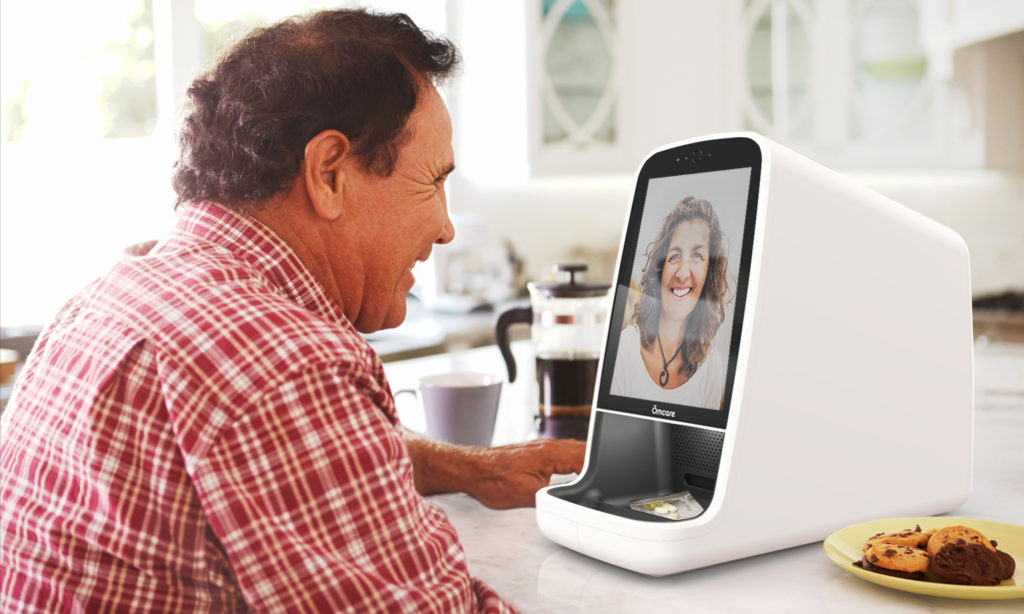
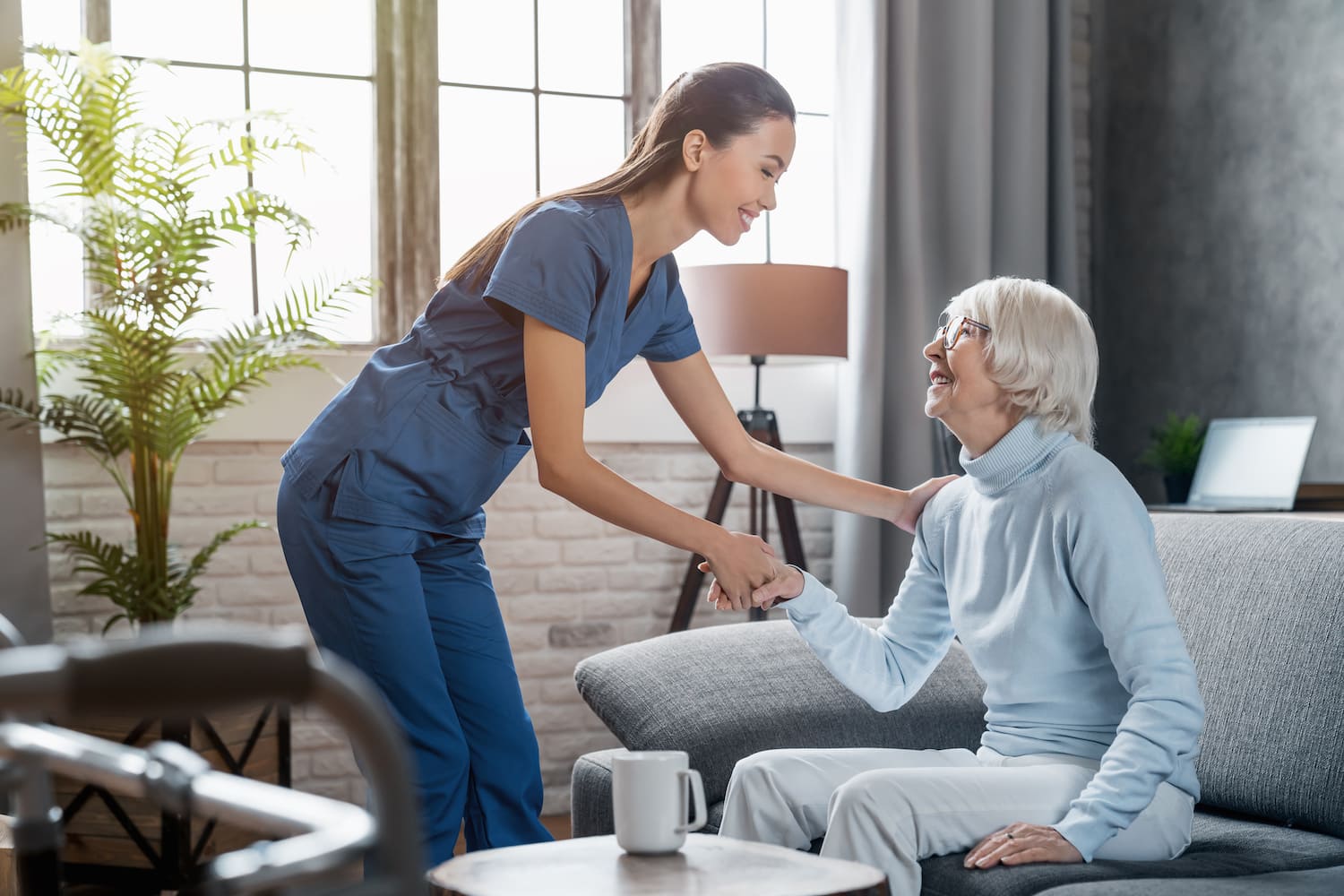

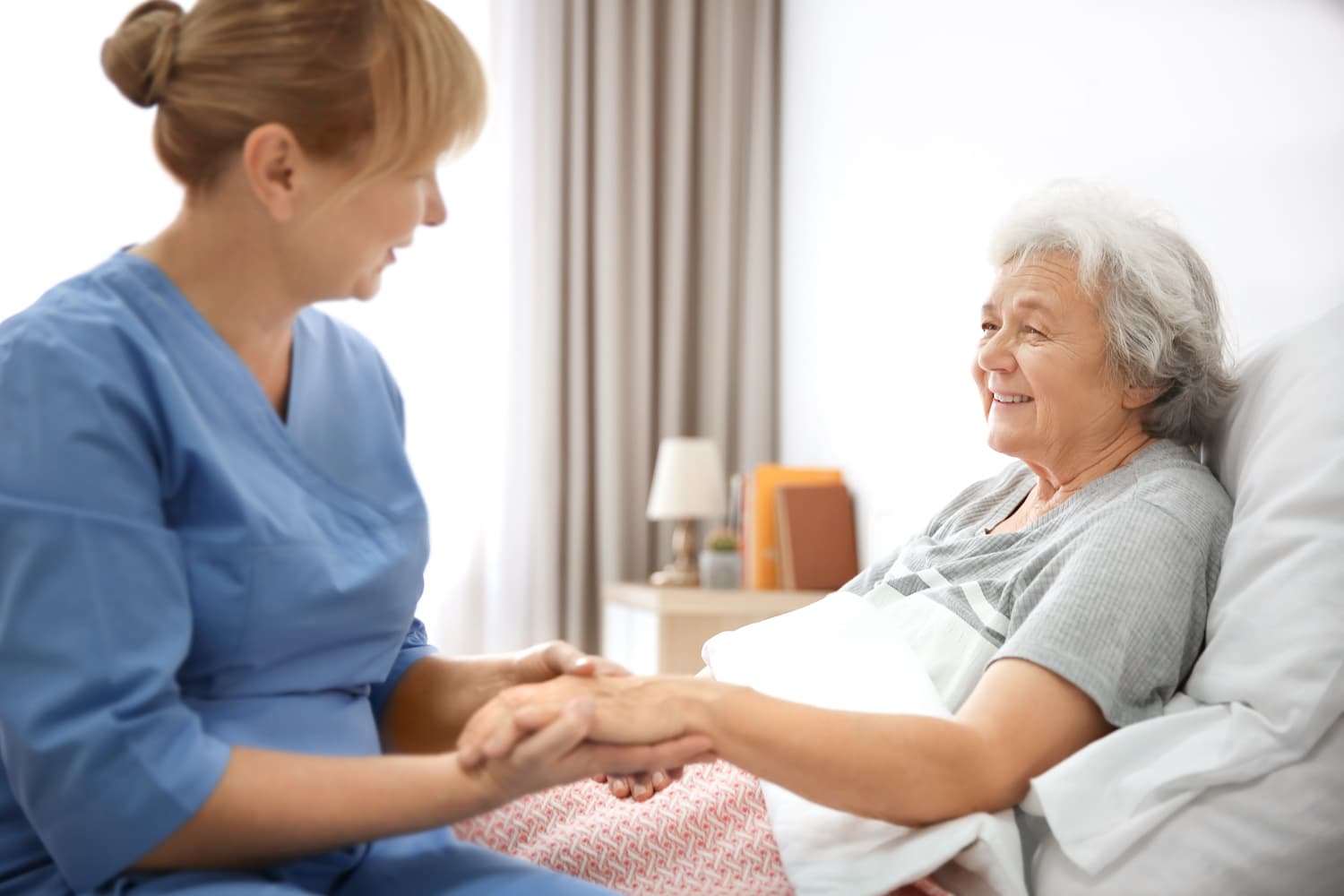
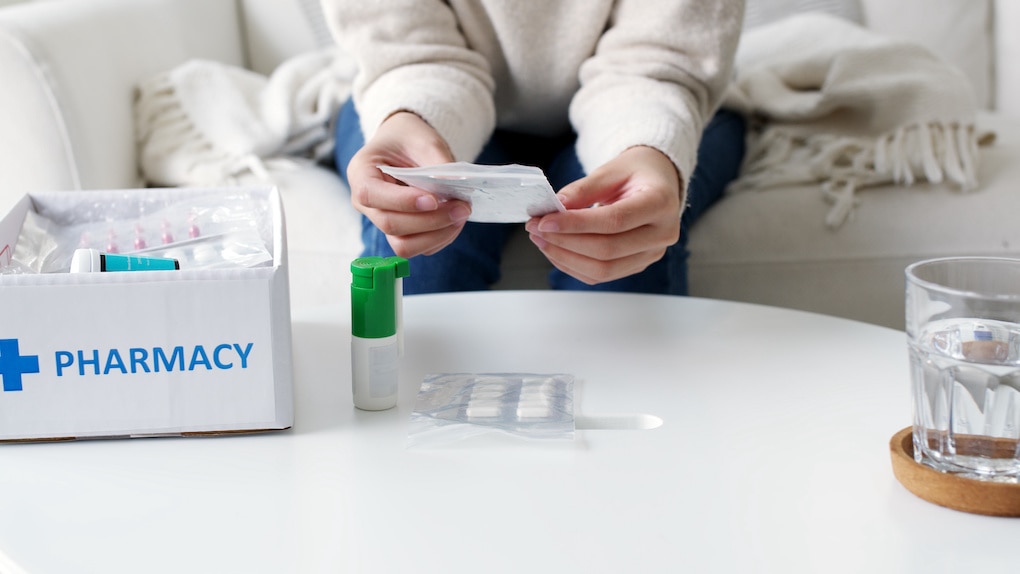
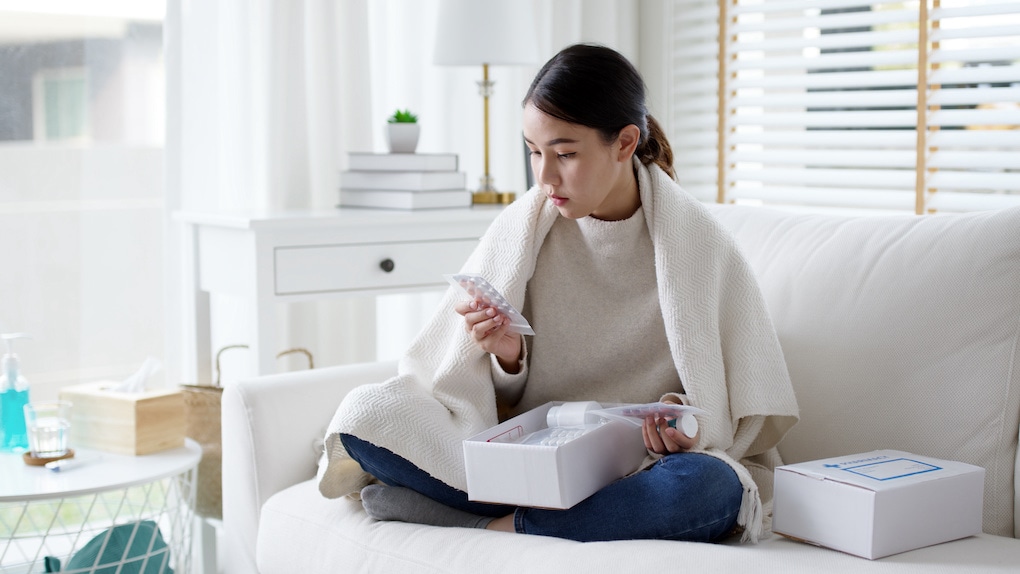
 Finding the Best for You
Finding the Best for You